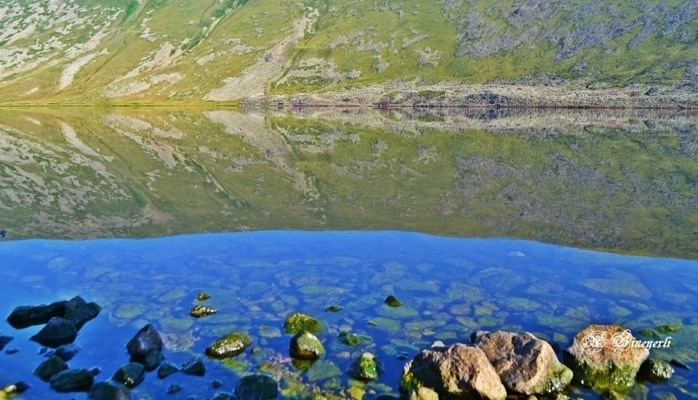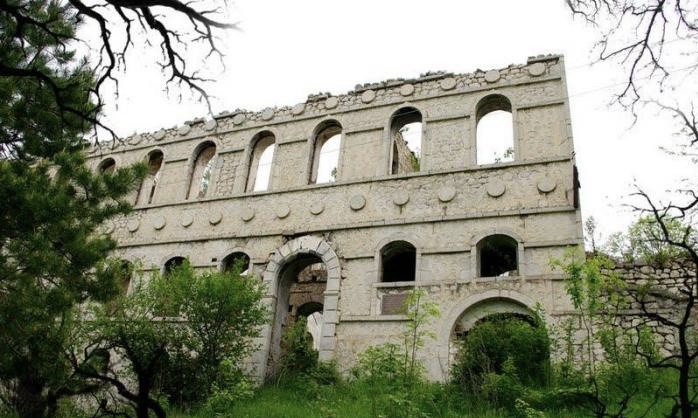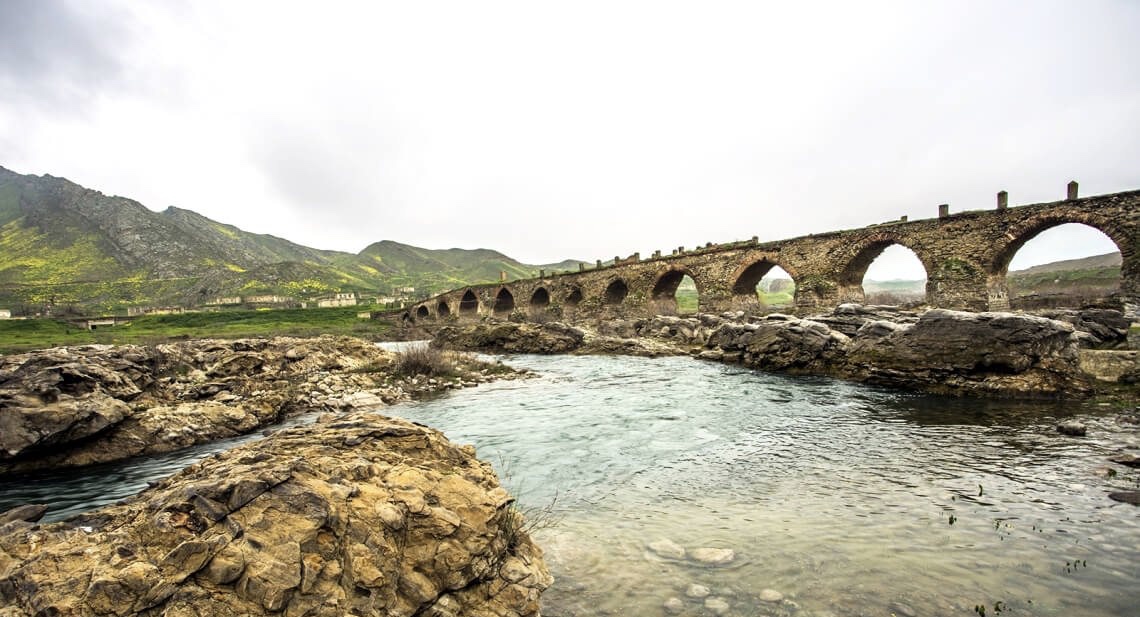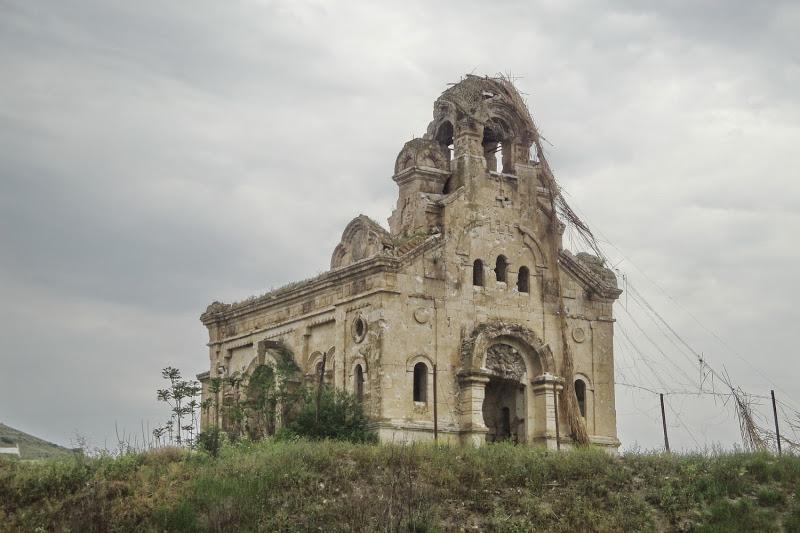






of







of







of





















Garghabazar Caravanserai was built in 1681 at the hillside, in the center of Garghabazar village of Fuzuli district, 8 km south of Fuzuli city. Caravanserai building is 23.7 meters wide, 34.7 meters in length. Garghabazar caravanserai is a single-storeyed multi-yarded asymmetric caravanserai with arched rooms like corridors. The caravanserai was named Garghabazar after the village it was built in. Sometimes this historical monument is also called Shah Abbas caravanserai. The architect of the monument is unknown since the inscription on the caravanserai is destroyed.
Concerning its architectural style, Garghabazar Caravanserai bears resemblance to the architectural traditions of the Albanian period. The plan and architectural style of the caravanserai are made obedient to the general design by solving the central axis symmetrically. It consists of two large-sized camel stalls, two small rooms for guards on the right and left sides, 6 square-shaped rooms for caravanserai owners and merchants. The importance of these rooms is also reflected in the fact that they are built at the highest point of relief. Two high pavements were planted in front of these rooms according to their functions and relief.
The main mass of the monument was built of unhewn stone. It is rectangular with a corner cut. On the left and right sides of the entrance, in front of guardrooms, there are two large flagstones. It is considered that guards used to stand on those flagstones. The doors of the rooms are opening to a medium-sized balcony. The balcony is decorated with 3 semicircular piers. There are special sewer lines in both halls of the Caravanserai where camels were kept. This proves once again that in the Karabakh monarchy, sewage issues were still very much focused on since ancient times. Caravanserai is considered an immovable historical monument of Azerbaijan. The Garghabazar Caravanserai is considered an immovable historical monument and a valuable example of the roadside-type caravanserais of Azerbaijan civil architecture.
After the occupation of Garghabazar village by the Armenian Armed Forces, this historical and architectural monument was ruined and transformed into a cowhouse.

Qaragol Interrepublics State Reserve was set up with the decision of the Council of Ministers dated November17, 1987. Garagol State …

The idea of establishing Aghdam Bread Museum, which is considered to be the second in the world after the Zurich …

The Khurshudbanu Natavan’s House is a historical and architectural monument of the 18th century located in the city of Shusha. …

Museum Mausoleum Complex of Molla Panah Vagif is located in Shusha, Azerbaijan. It was built in honor of Molla Panah …

Garghabazar Caravanserai was built in 1681 at the hillside, in the center of Garghabazar village of Fuzuli district, 8 km …

The Bridge belongs to the Arran architecture school. The first written source that mentioned the 15-arched Khudafarin Bridge belongs to …

Armenia’s vandalism in Nagorno-Karabakh and seven surrounding regions affected not only the historical, cultural, and religious heritage of Islam but …

Jabrayil History-Ethnography Museum has been operating since 1953. Archaeological and ethnographic materials belonging to the history of the region, textiles, …

Khudavang, or Dedeveng, Monastery Complex is located in the Vang village of Kalbajar District, on the left bank of Tartar …

“The 19th century Aghdam Juma Mosque is perhaps the only structure that has withstood the years of neglect since the …